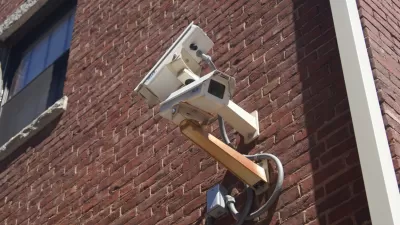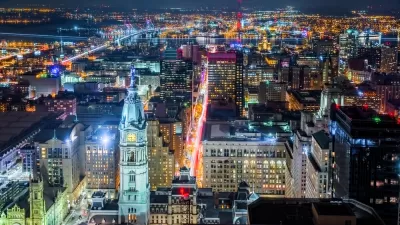The irony is unmistakable. Public surveillance cameras, long controversial in the criminal justice community, provided pivotal video footage of the beating of motorist Tyre Nichols by five Memphis police officers at a traffic stop on January 7.

While the bulk of the video of the police confrontation with 29-year-old Tyre Nichols resulting from a traffic stop on January 7 was taken by body cameras worn by the Memphis police officers, a SkyCop camera “affixed to a utility pole in a white metal box with a bright blue light” also trained on the incident, reported Rick Rojas and Jesus Jiménez for The New York Times on February 1. Nichols died three days later.
It “has been widely regarded as critical in shaping the public’s understanding of what unfolded after the police pulled over Mr. Nichols that night, by offering an unobstructed bird’s-eye view.”
“Glory be to God that a SkyCop camera was there to catch what happened,” Van D. Turner Jr., the president of the Memphis branch of the N.A.A.C.P., said last week.
“The sky cam video makes the difference,” said the Rev. Dr. J. Lawrence Turner, the pastor of the Mississippi Boulevard Christian Church in Memphis, where Mr. Nichols’s funeral is to be held on Wednesday, adding that if “we were only left with the body cam footage,” it would still be harrowing and infuriating, but possibly not as conclusive to prosecutors as they considered charges against the officers. Five of them were charged with second-degree murder, among other things, last week for the death of Mr. Nichols.
The cameras remain controversial despite the important video footage they provided of the traffic stop.
“Camera systems like SkyCop, which have been adopted by police departments around the country, have been criticized by activists and privacy advocates as a costly investment that does little to deter crime while adding to the overbearing presence that the police often have in neighborhoods — especially poor ones — where the cameras have proliferated,” add Rojas and Jiménez.
“It just so happens that in the case of Tyre, those cameras worked out in that way,” said Chelsea Glass, an organizer with Decarcerate Memphis, a group pushing for overhauling the criminal justice system.
“It’s not really about the cameras,” said Duane T. Loynes Sr., a professor at Rhodes College in Memphis whose research focuses on the strained relationship between the Black community and law enforcement. “It’s about who’s in charge of the cameras.”
Hat tip to Bloomberg City Lab.
FULL STORY: As Officers Beat Tyre Nichols, a Crime-Fighting Camera Watched Over Them

Planetizen Federal Action Tracker
A weekly monitor of how Trump’s orders and actions are impacting planners and planning in America.

Restaurant Patios Were a Pandemic Win — Why Were They so Hard to Keep?
Social distancing requirements and changes in travel patterns prompted cities to pilot new uses for street and sidewalk space. Then it got complicated.

Map: Where Senate Republicans Want to Sell Your Public Lands
For public land advocates, the Senate Republicans’ proposal to sell millions of acres of public land in the West is “the biggest fight of their careers.”

Maui's Vacation Rental Debate Turns Ugly
Verbal attacks, misinformation campaigns and fistfights plague a high-stakes debate to convert thousands of vacation rentals into long-term housing.

San Francisco Suspends Traffic Calming Amidst Record Deaths
Citing “a challenging fiscal landscape,” the city will cease the program on the heels of 42 traffic deaths, including 24 pedestrians.

California Homeless Arrests, Citations Spike After Ruling
An investigation reveals that anti-homeless actions increased up to 500% after Grants Pass v. Johnson — even in cities claiming no policy change.
Urban Design for Planners 1: Software Tools
This six-course series explores essential urban design concepts using open source software and equips planners with the tools they need to participate fully in the urban design process.
Planning for Universal Design
Learn the tools for implementing Universal Design in planning regulations.
Heyer Gruel & Associates PA
JM Goldson LLC
Custer County Colorado
City of Camden Redevelopment Agency
City of Astoria
Transportation Research & Education Center (TREC) at Portland State University
Camden Redevelopment Agency
City of Claremont
Municipality of Princeton (NJ)




























